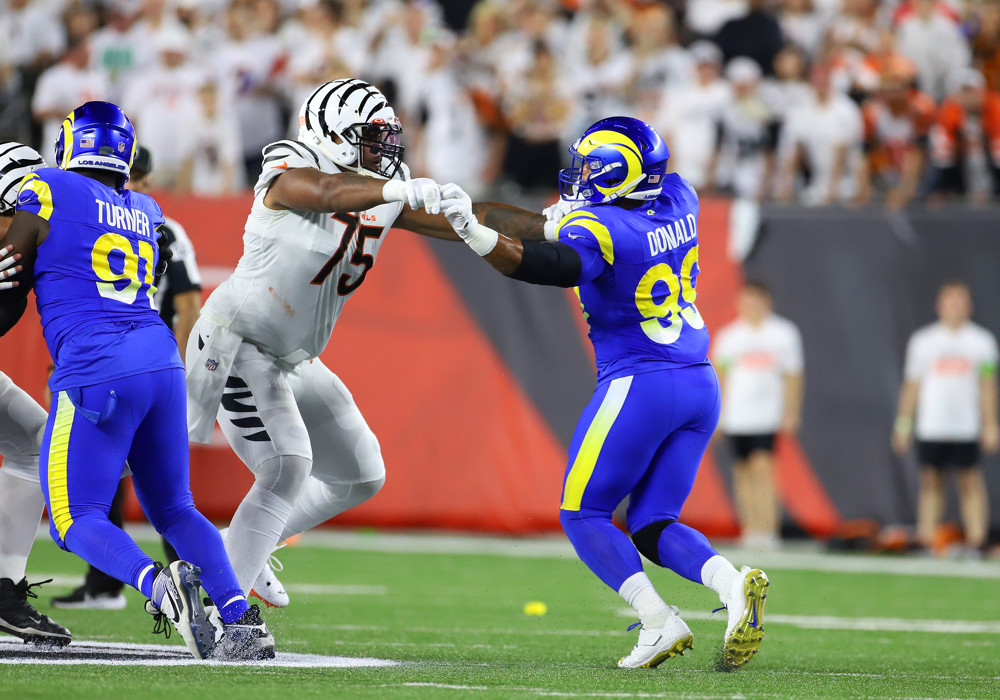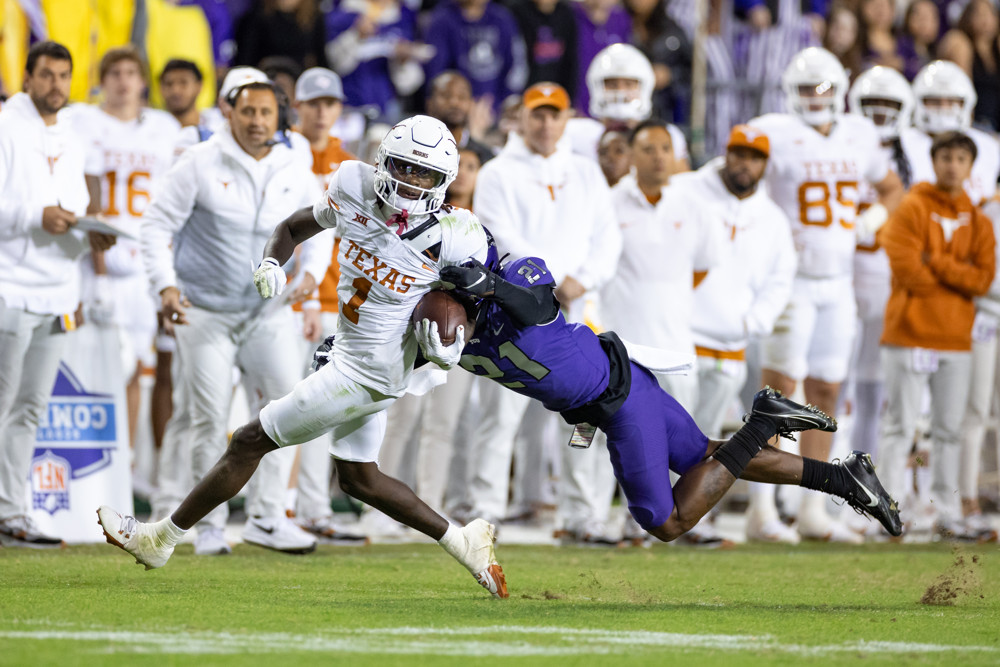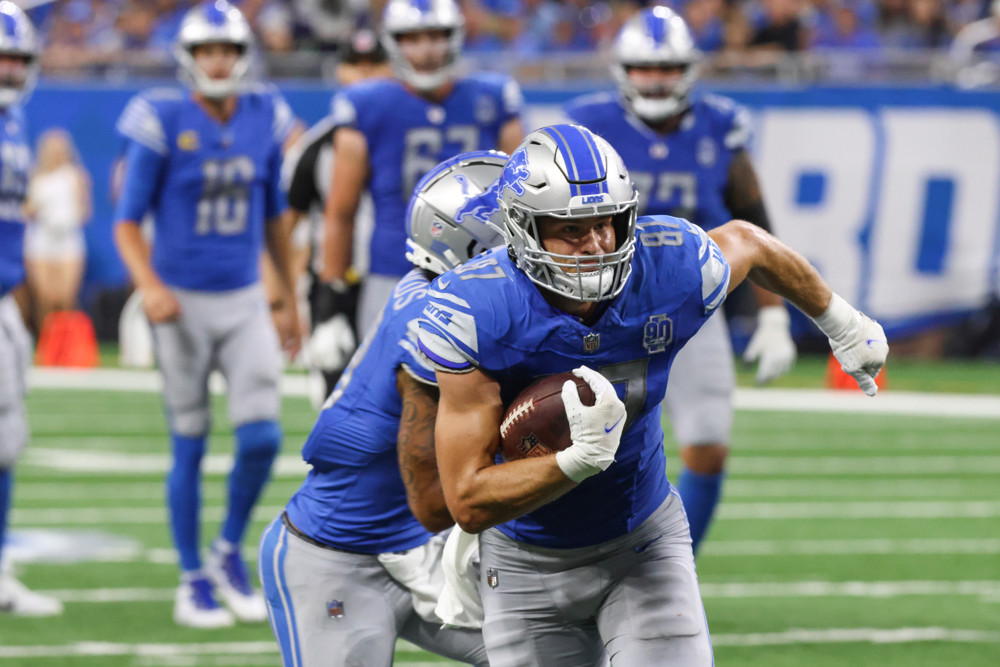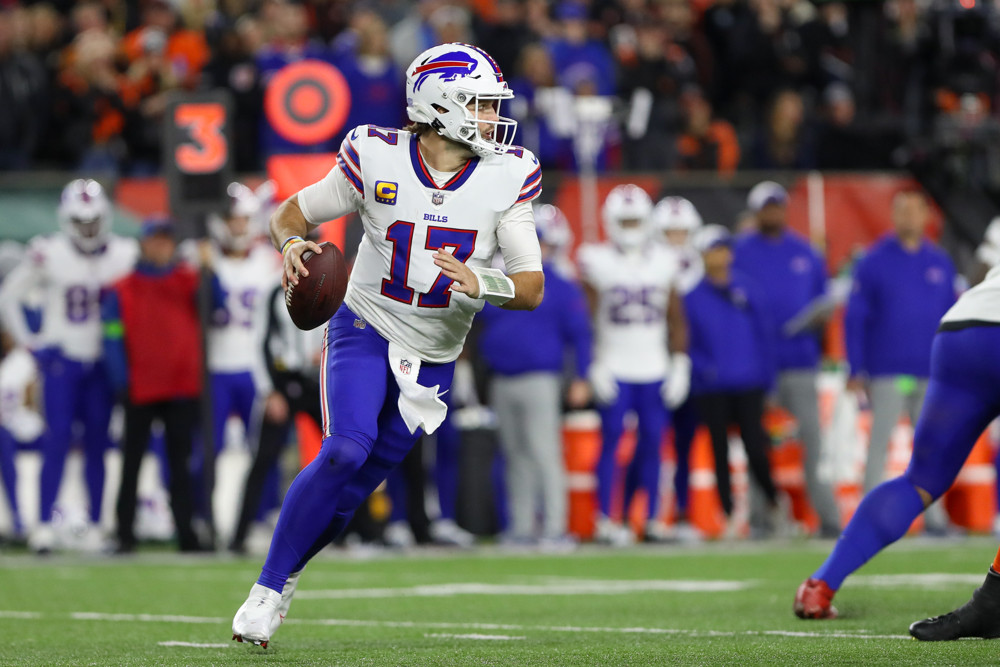
We’re continuing our look at 1979 and 1980 DVOA ratings with the unveiling of the 1980 player DVOA and DYAR ratings. Earl Campbell was an absolute beast in 1980, even better than he was in 1979. Dan Fouts had another great year. The Falcons and Browns had very strong offenses, and the Patriots had a strong offense despite getting subpar quarterback play. They got excellent receiving numbers from players such as Stanley Morgan and Russ Francis but Steve Grogan threw 22 interceptions in 12 games.
Here’s the schedule for introducing 1979 and 1980 DVOA this week:
- Monday: 1979 team ratings
- Tuesday: 1979 player ratings
- Wednesday: 1980 team ratings
- Thursday: 1980 player ratings
- Friday: All 1979 and 1980 ratings will be added to downloads on the DVOA Historical Archives page.
Remember, all numbers below do not include the missing Week 9 game between San Diego and Cincinnati. That makes our No. 1 quarterback of the year even more interesting…
QUARTERBACKS
Dan Fouts was the No. 1 quarterback of 1980 by passing DYAR, not bad considering that we’re missing an entire game where he threw for 270 yards and three touchdowns with no interceptions and only one sack. Ron Jaworski of the Eagles was second in DYAR and first in DVOA, throwing fewer passes than Fouts but with slightly more efficiency. Both Fouts and Jaworski get a bump upwards from opponent adjustments for difficult schedules. Without opponent adjustments, the top quarterback would be Brian Sipe of the Cleveland Browns, who won the Associated Press MVP award that year.
Fouts was the top quarterback because he led the league in net yards per attempt despite having a lot more interceptions compared to the other top quarterbacks. The more things change, the more they stay the same.
I’m extending our list of the top quarterbacks of 1980 to the top dozen so I can get in a certain second-year quarterback out of Notre Dame who threw fewer than 300 passes in seven starts.
| Top 12 in Passing DYAR, 1980 | |||||||||||
| Player | Team | DYAR | Rk | DVOA | Rk | Passes | Yards | TD | INT | C% | NY/P |
| D.Fouts | SD | 1,471 | 1 | 28.3% | 2 | 582 | 4238 | 27 | 24 | 59.6% | 7.28 |
| R.Jaworski | PHI | 1,408 | 2 | 36.1% | 1 | 483 | 3311 | 27 | 12 | 56.9% | 6.86 |
| B.Sipe | CLE1 | 1,369 | 3 | 27.5% | 3 | 577 | 3905 | 30 | 14 | 60.9% | 6.77 |
| S.Bartkowski | ATL | 1,028 | 4 | 22.4% | 4 | 500 | 3217 | 31 | 16 | 55.5% | 6.43 |
| V.Ferragamo | LARM | 795 | 5 | 18.4% | 5 | 426 | 3005 | 30 | 19 | 59.6% | 7.05 |
| A.Manning | NO | 739 | 6 | 10.9% | 8 | 548 | 3404 | 23 | 20 | 61.1% | 6.21 |
| D.Williams | TB | 651 | 7 | 8.4% | 12 | 546 | 3206 | 20 | 16 | 48.9% | 5.87 |
| B.Jones | BALC | 643 | 8 | 10.4% | 9 | 480 | 2871 | 23 | 18 | 55.7% | 5.98 |
| J.Ferguson | BUF | 641 | 9 | 11.3% | 7 | 454 | 2668 | 20 | 16 | 57.3% | 5.88 |
| D.White | DAL | 611 | 10 | 10.1% | 10 | 469 | 3012 | 28 | 25 | 59.8% | 6.42 |
| J.Montana | SF | 435 | 11 | 12.9% | 6 | 289 | 1695 | 15 | 9 | 64.2% | 5.87 |
| T.Kramer | MIN | 431 | 12 | 1.4% | 14 | 561 | 3366 | 19 | 22 | 57.2% | 6.00 |
Vince Ferragamo of the Rams is lower in DVOA despite the high net yards per pass because of an easy schedule, with only one game against the top nine pass defenses (Detroit, seventh, in Week 1).
A number of the top quarterbacks of 1979 fell off significantly in 1980. Joe Theismann was 16th, Jim Zorn was 17th, Terry Bradshaw was 19th, and Kenny Stabler was 29th out of 30 qualifying quarterbacks in passing DYAR.
Steve Fuller of the Chiefs was dead last among quarterbacks with -316 passing DYAR. Phil Simms and Richard Todd, the two New York quarterbacks, were also near the bottom of the league. And erstwhile Hall of Fame candidate Ken Anderson was surprisingly bad in 1980, with Anderson ranking 25th in passing DYAR (again, missing the Week 9 game) while the other Bengals quarterback, Jack “The Throwin’ Samoan” Thompson, ranking 26th. Anderson also made it through half a season without drawing a single DPI flag.
Doug Williams, Vince Evans, and Richard Todd were the top three quarterbacks in rushing DYAR in 1980. Williams had 376 rushing yards and Evans had 311 rushing yards with eight touchdowns. Lynn Dickey of the Packers had the most negative rushing value, with three botched handoffs plus another eight carries for only 15 yards.
RUNNING BACKS
It was Earl Campbell’s world and everybody else was just living in it. At one point when I was putting the 1980 numbers together, Campbell had the highest rushing DYAR of all time. That changed because of a tweak in which plays counted as botched handoffs, but he’s basically tied with Terrell Davis and his amazing 1998 season. Here’s the same table I ran in the 1979 player stats piece:
| Top RB Rushing DYAR Seasons, 1979-2023 | ||||||||
| Player | Team | Year | DYAR | DVOA | Runs | Yards | TD | Suc% |
| T.Davis | DEN | 1998 | 652 | 29.0% | 392 | 2,008 | 21 | 52% |
| E.Campbell | HOIL | 1980 | 649 | 31.5% | 373 | 1,934 | 13 | 58% |
| T.Davis | DEN | 1997 | 541 | 25.3% | 369 | 1,743 | 15 | 56% |
| E.Smith | DAL | 1995 | 540 | 23.6% | 377 | 1,773 | 25 | 53% |
| E.Campbell | HOIL | 1979 | 539 | 24.2% | 370 | 1,700 | 19 | 57% |
| S.Davis | WAS | 1999 | 531 | 32.8% | 290 | 1,405 | 17 | 60% |
| P.Holmes | KC | 2003 | 513 | 27.1% | 320 | 1,420 | 27 | 58% |
| P.Holmes | KC | 2002 | 513 | 29.3% | 313 | 1,615 | 21 | 55% |
| J.Taylor | IND | 2021 | 511 | 25.3% | 332 | 1,811 | 18 | 56% |
| L.Johnson | KC | 2005 | 488 | 24.1% | 335 | 1,741 | 20 | 55% |
| L.Tomlinson | SD | 2006 | 460 | 23.1% | 347 | 1,813 | 28 | 49% |
| A.Peterson | MIN | 2012 | 458 | 24.9% | 348 | 2,097 | 12 | 49% |
Campbell was a terrible receiving back. In 1980, he didn’t even have enough targets to qualify for ranking among the running backs, but he caught 11 of 19 passes for just 47 yards and a total of -42 DYAR. Nonetheless, Campbell’s rushing performance was so good that Campbell’s 1980 season ranks among the top 10 combined rushing and receiving seasons in DYAR history.
| Top Combined Rushing and Receiving DYAR for RB, 1979-2023 | |||||
| Player | Team | Year | Run | Rec | Total |
| M.Faulk | STL | 2000 | 455 | 345 | 800 |
| P.Holmes | KC | 2002 | 513 | 263 | 776 |
| P.Holmes | KC | 2003 | 513 | 234 | 747 |
| M.Faulk | STL | 1999 | 321 | 419 | 740 |
| M.Faulk | STL | 2001 | 346 | 360 | 706 |
| M.Faulk | IND | 1998 | 281 | 421 | 702 |
| T.Davis | DEN | 1998 | 652 | 45 | 697 |
| C.McCaffrey | CAR | 2019 | 278 | 386 | 664 |
| E.Campbell | HOIL | 1980 | 649 | -42 | 607 |
| W.Andrews | ATL | 1983 | 390 | 217 | 607 |
| T.Thomas | BUF | 1991 | 316 | 290 | 606 |
| L.Johnson | KC | 2005 | 488 | 115 | 603 |
William Andrews, in his second year with the Falcons, finished way behind Campbell in second place for rushing DYAR. Elvis Peacock of the Rams was third in rushing DYAR and second in DVOA behind Campbell. Peacock is an interesting story. He was a first-round pick in 1978, 20th overall, but never played as a rookie because of a knee injury. In 1979, he only had 52 carries for the Rams because of a broken ankle. That moved up to 164 carries for 777 yards and seven touchdowns in 1980 but his season ended early with another knee injury. The Rams cut him despite 4.7 yards per carry. The Bengals picked him up and he was active in three games for 1981 but never touched the ball and then never played another down in the NFL. This article calls him one of the 10 biggest draft busts in Oklahoma history.
Here are the top 10 running backs in rushing DYAR for 1980:
| Top 10 RB in Rushing DYAR, 1980 | |||||||||
| Player | Team | DYAR | Rk | DVOA | Rk | Runs | Yards | TD | Suc% |
| E.Campbell | HOIL | 649 | 1 | 31.5% | 1 | 373 | 1,934 | 13 | 58% |
| W.Andrews | ATL | 274 | 2 | 15.5% | 7 | 265 | 1,308 | 4 | 55% |
| E.Peacock | LARM | 221 | 3 | 21.8% | 2 | 164 | 777 | 7 | 59% |
| T.Dorsett | DAL | 209 | 4 | 10.7% | 15 | 279 | 1,186 | 11 | 49% |
| O.Anderson | STLC | 202 | 5 | 7.7% | 18 | 300 | 1,352 | 9 | 50% |
| D.Calhoun | NE | 193 | 6 | 12.6% | 13 | 200 | 788 | 9 | 56% |
| W.Payton | CHI | 192 | 7 | 6.5% | 19 | 317 | 1,460 | 6 | 49% |
| C.Dickey | BALC | 186 | 8 | 15.7% | 5 | 176 | 802 | 11 | 50% |
| P.Johnson | CIN | 185 | 9 | 12.9% | 12 | 186 | 747 | 6 | 56% |
| C.Bryant | LARM | 173 | 10 | 13.7% | 10 | 183 | 809 | 3 | 54% |
Jerry Eckwood of the Buccaneers, who was last in rushing DYAR in 1979, was last in rushing DYAR once again in 1980. He had 149 carries for 504 yards with two touchdowns and a league-worst 41% success rate.
One surprising DYAR result belongs to Billy Sims of the Lions, the No. 1 overall pick who won Rookie of the Year. Sims ran 314 times for 1,292 yards and 13 touchdowns and yet he finished 47th among qualifying running backs with -50 rushing DYAR! Part of the problem was that Sims also had a league-leading 12 fumbles on running plays. He only had a 44% success rate, which ranked 41st out of 50 backs. And Sims faced a very easy schedule. Sims played seven games against the league’s seven worst run defenses by DVOA, including two each against division rivals Minnesota (26th) and Tampa Bay (22nd).
Sims was a much more valuable receiver than he was a runner, finishing third in receiving DYAR among running backs. He caught 51 passes for 621 yards with three receiving touchdowns. San Francisco’s Paul Hofer was first in receiving, with a higher DVOA rating on 41 catches for 467 yards and two touchdowns. Washington’s Clarence Harmon was second in receiving value.
Also impressive were the receiving DVOA ratings of two running backs who just barely passed the baseline of 25 targets to be ranked. Andy Johnson of the Patriots and Preston Pearson of the Cowboys come out with the two highest receiving DVOA ratings ever for qualified running backs. This is some small sample size theatre, certainly, but a fun little stat. Pearson as a 35-year-old back in his last season after 14 years in the NFL! This list is extended to 13 backs just to show you how incredible Marshall Faulk was given his usage:
| Top RB Recieving DVOA (min. 25 passes), 1979-2023 | ||||||||||
| Player | Team | Year | DYAR | DVOA | Rec | Pass | Yds | TD | Yd/C | C% |
| A.Johnson | NE | 1980 | 141 | 84.2% | 24 | 28 | 259 | 3 | 10.8 | 86% |
| P.Pearson | DAL | 1980 | 127 | 80.4% | 20 | 27 | 213 | 2 | 10.7 | 74% |
| K.Hunt | KC | 2018 | 198 | 79.4% | 26 | 35 | 378 | 7 | 14.5 | 74% |
| C.Harmon | WAS | 1979 | 227 | 79.1% | 32 | 46 | 434 | 5 | 13.6 | 70% |
| M.Ingram | BAL | 2019 | 145 | 74.6% | 26 | 29 | 247 | 5 | 9.5 | 90% |
| D.Sproles | SD | 2008 | 167 | 70.7% | 29 | 34 | 348 | 5 | 12.0 | 85% |
| L.Johnson | KC | 2004 | 141 | 70.0% | 22 | 28 | 278 | 2 | 12.6 | 79% |
| T.Fisher | GB | 2003 | 96 | 68.7% | 21 | 25 | 206 | 2 | 9.8 | 84% |
| J.McPhail | MIA | 1996 | 118 | 67.3% | 20 | 29 | 282 | 0 | 14.1 | 69% |
| C.Thompson | WAS | 2017 | 223 | 67.3% | 39 | 54 | 510 | 4 | 13.1 | 72% |
| B.Sanders | DET | 1990 | 186 | 67.0% | 36 | 49 | 480 | 3 | 13.3 | 73% |
| J.Anderson | ATL | 1997 | 141 | 66.5% | 29 | 37 | 284 | 3 | 9.8 | 78% |
| M.Faulk | STL | 1999 | 419 | 64.8% | 87 | 104 | 1,048 | 5 | 12.0 | 84% |
Charles Alexander of the Bengals was the lowest-valued running back for receiving, averaging just 5.3 yards per reception.
A few more interesting names for rushing value:
- Wilbert Montgomery, Eagles: 107 rushing DYAR (19th)
- Joe Cribbs, Bills (rookie): 87 rushing DYAR (26th)
- Franco Harris, Steelers: 56 rushing DYAR (30th)
WIDE RECEIVERS
Tony Hill of the Dallas Cowboys led all wide receivers in DYAR and was second in DVOA for 1980. He had the highest catch rate among qualifying receivers at 64%, although this gets an asterisk since there were a few official scorers around the league who weren’t so good at always marking the intended receiver on incomplete passes and interceptions. Hill was followed in DYAR by John Jefferson of the Chargers and Alfred Jenkins of the Falcons. The top qualifying wideout in DVOA was Pittsburgh’s third receiver, Theo Bell, who got more play in 1980 due to injuries to Lynn Swann and John Stallworth. He averaged 25.8 yards per reception and converted 10 of 17 targets on third down with five or more yards to go. When he held out of training camp in 1981 trying to get more money, the Steelers cut him and he ended up in Tampa Bay for five seasons.
Here’s a look at the top 10 wide receivers of 1980 by DYAR:
| Top 10 WR in Receiving DYAR, 1980 | |||||||||||
| Player | Team | DYAR | Rk | DVOA | Rk | Rec | Pass | Yds | TD | Yd/C | C% |
| T.Hill | DAL | 335 | 1 | 33.7% | 2 | 60 | 94 | 1,055 | 8 | 17.6 | 64% |
| J.Jefferson | SD | 305 | 2 | 15.5% | 8 | 78 | 143 | 1,288 | 11 | 16.5 | 55% |
| A.Jenkins | ATL | 280 | 3 | 21.7% | 5 | 56 | 106 | 1,016 | 6 | 18.1 | 53% |
| C.Smith | PHI | 256 | 4 | 29.8% | 3 | 47 | 75 | 825 | 3 | 17.6 | 63% |
| A.Rashad | MIN | 208 | 5 | 9.7% | 16 | 69 | 123 | 1,095 | 5 | 15.9 | 56% |
| S.Morgan | NE | 208 | 6 | 18.4% | 6 | 45 | 90 | 986 | 6 | 21.9 | 50% |
| T.Bell | PIT | 203 | 7 | 36.8% | 1 | 29 | 55 | 748 | 2 | 25.8 | 53% |
| H.Jackson | NE | 201 | 8 | 26.2% | 4 | 35 | 67 | 737 | 5 | 21.1 | 52% |
| W.Chandler | NO | 198 | 9 | 11.3% | 13 | 65 | 106 | 975 | 6 | 15.0 | 61% |
| P.Tilley | STLC | 185 | 10 | 9.5% | 17 | 68 | 111 | 966 | 6 | 14.2 | 61% |
Last among the qualifying wide receivers was Billy “White Shoes” Johnson for the Houston Oilers at -165 DYAR and -46.3% DVOA. White Shoes caught 31 out of 66 passes for 343 yards and two touchdowns against an easy schedule. He also was no longer getting value as a return man after a 1979 knee injury, as he stopped returning kickoffs and punts. Johnson then left the NFL and played 1981 in the CFL for the Montreal Allouettes before returning in 1982.
Some other well-known wide receivers and their rank in DYAR that season:
- James Lofton, Packers: 181 DYAR (12th)
- Steve Largent, Seahawks: 177 DYAR (13th)
- Lynn Swann, Steelers: 170 DYAR (16th)
- Charlie Joiner, Chargers: 121 DYAR (24th)
- Art Monk, Redskins (rookie): 62 DYAR (33rd)
TIGHT ENDS
Russ Francis of the Patriots and Kellen Winslow of the Chargers were basically tied for the lead in receiving DYAR, with two very different seasons. Francis was No. 1 in DVOA because he was so efficient, leading all tight ends in yards per reception and scoring eight touchdowns on only 41 catches. He also added on three DPI flags for 84 additional yards. Winslow had a huge breakout second season and was by far the best receiver in terms of raw catches and yards, over 300 more yards than any other tight end. Dave Casper ranked third, getting a boost from a tough schedule but dropping a bit in DYAR because of three fumbles. He was traded at midyear from the Raiders to the Oilers for first- and second-round draft picks. Draft picks just had a very different value in trades 40 years ago.
Here are the top 10 tight ends in receiving DYAR for 1980:
| Top 10 TE in Receiving DYAR, 1980 | |||||||||||
| Player | Team | DYAR | Rk | DVOA | Rk | Rec | Pass | Yds | TD | Yd/C | C% |
| R.Francis | NE | 220 | 1 | 43.6% | 1 | 41 | 68 | 664 | 8 | 16.2 | 60% |
| K.Winslow | SD | 219 | 2 | 20.9% | 7 | 80 | 119 | 1,137 | 8 | 14.2 | 67% |
| D.Casper | 2TM | 137 | 3 | 16.2% | 9 | 56 | 87 | 796 | 4 | 14.2 | 64% |
| R.Odoms | DEN | 117 | 4 | 21.4% | 6 | 39 | 64 | 590 | 6 | 15.1 | 61% |
| D.Ross | CIN | 102 | 5 | 14.1% | 12 | 48 | 74 | 637 | 4 | 13.3 | 65% |
| P.Coffman | GB | 93 | 6 | 17.4% | 8 | 42 | 63 | 496 | 3 | 11.8 | 67% |
| J.Saldi | DAL | 88 | 7 | 35.7% | 2 | 25 | 29 | 311 | 1 | 12.4 | 86% |
| M.Brammer | BUF | 82 | 8 | 25.3% | 3 | 26 | 37 | 283 | 4 | 10.9 | 70% |
| K.Krepfle | PHI | 78 | 9 | 15.3% | 11 | 30 | 54 | 450 | 4 | 15.0 | 56% |
| M.Barber | HOIL | 70 | 10 | 5.2% | 14 | 59 | 87 | 712 | 5 | 12.1 | 68% |
Veteran tight end Bob Tucker, in his final season with the Vikings, was last in receiving DYAR, catching 15 of 31 passes for 173 yards and a touchdown. One surprise found third from the bottom was Jimmie Giles of the Buccaneers. Giles had 602 total yards with 18.2 yards per reception along with four DPI flags for 48 yards, but he also had a 39% catch rate and fumbled twice for -64 DYAR.




























